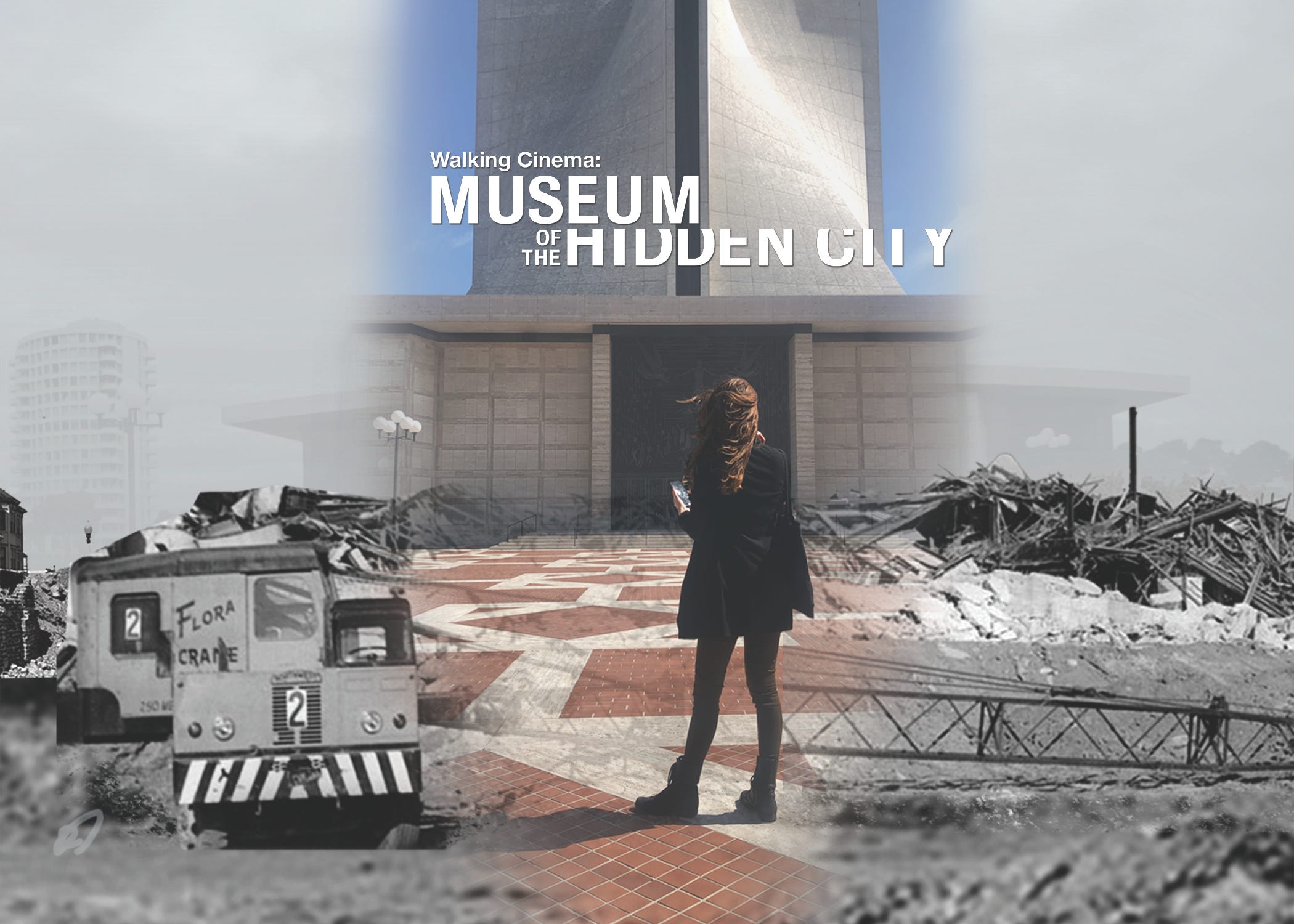
Confession: I’m not always the biggest fan of museums.
More often than not, given the spatial and operational limitations, I find they often exist in an unhappy medium, somehow more in depth than the shallow interest of a casual visitor and too superficial for the scholar or enthusiast. While there are exceptions — where the presentation can challenge preconceived notions or highlight the thrill of seeing historical artifacts or great works of art in person — more often than not, I find that even the most expansive, informative museum can grow tedious in a way that couldn’t hope to rival a good deep dive at the library or a well-made documentary.
Every once in a while, though, a curator comes along and brings that special blend of subject matter, presentation, and technology — that rare alchemy that creates a truly unique, dare I say, immersive experience.
I’m similarly skeptical about Augmented Reality technology. While capable of creating beautiful, visually arresting experiences, it seems these expensive engines and algorithms are more widely known for their ability to add a dog nose to your social media clips or to search for digital creatures, bringing millions of people together for the unified real world experience of sticking their nose into their phone and wandering into traffic.
So it was with some skepticism that I downloaded the Walking Cinema app that drives the Museum of the Hidden City, an augmented reality experience that aims to explore the history of San Francisco’s “80 year affordable housing experiment.”
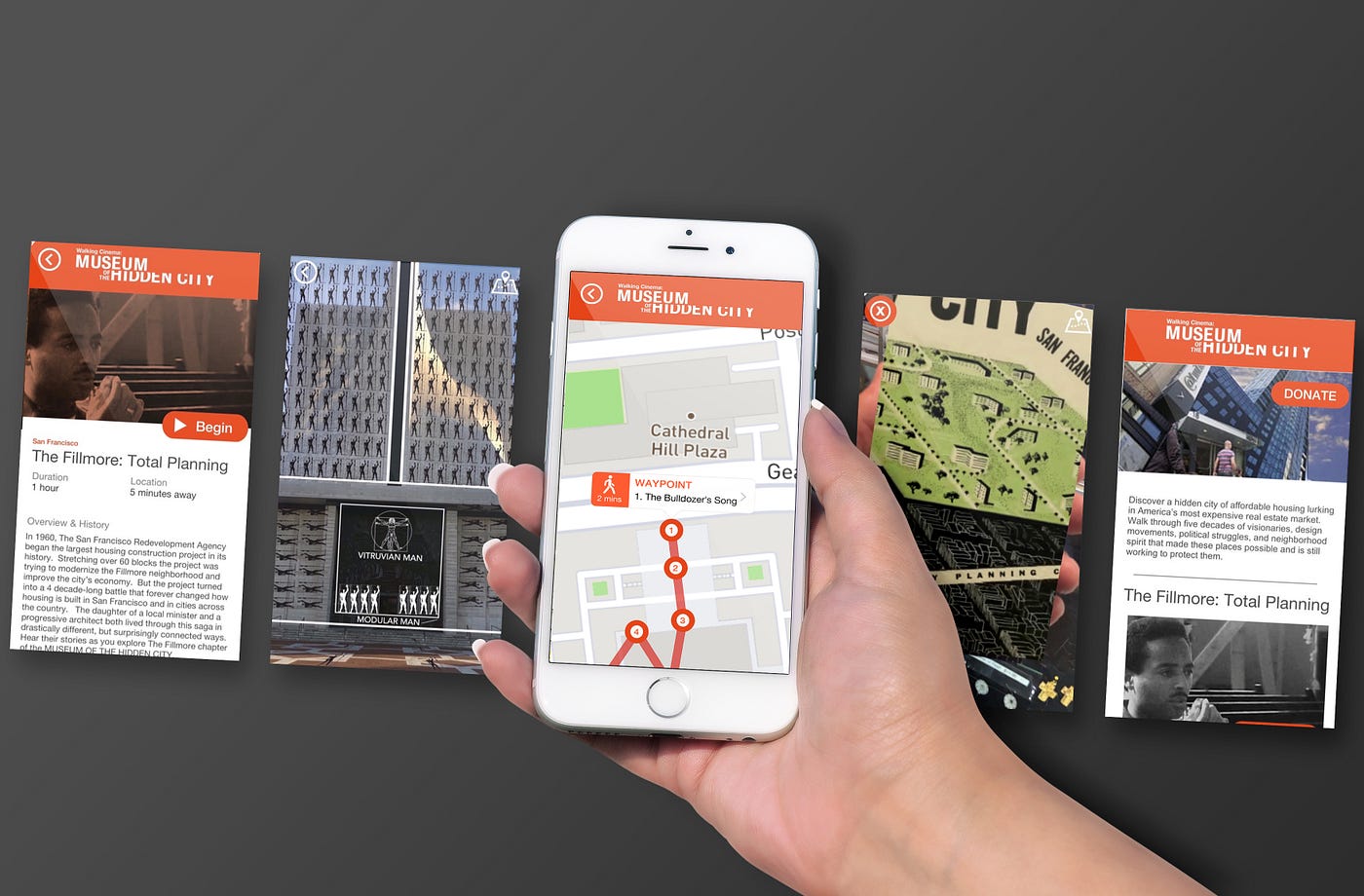
I moved to San Francisco the year it officially became the most expensive city in the country. As a student under a gradually growing mountain of debt, that fact didn’t really register with me at first. But as the years have passed, and I continued the slow steady work of climbing my way out from under that mountain, the fact that this city that I have grown to know (and love) carries such a moniker is not lost on me. The city that purports to love and open its arms to all has steadily grown less and less open. The understanding that this place has grown so inaccessible is not a sudden one, but rather a gradual, slow disillusionment — the pride of living in a place that thrives on innovation and big ideas slowly giving way to disappointment in the leaders who prioritize shareholder profits over the health, dignity, and basic needs of its most vulnerable.
I thought it was a new phenomenon.
My second year in San Francisco, I moved into the neighborhood originally known as the Western Addition. Named originally for the westward expansion of the city that grew outward from its bay facing ports to the east, the Western Addition has been contentiously renamed and subdivided into countless smaller neighborhoods by real estate agents and urban planners hoping to raise property values, courting gentrification and dividing a place once known as the city’s “first multicultural neighborhood.”
I was aware that there were many complex cultural forces at work all around me, but I was ignorant to their nuance and their history. It wasn’t that I was devoid of curiosity or interest. Frankly, it seemed that the modern problems our city faces are complex and difficult enough, without worrying oneself about historical footnotes. And San Francisco certainly isn’t alone, as all over the country, the ability to pay for the most basic of accommodations are under constant threat from student and medical debt, limited employment options, and mounting income inequality, not to mention the climbing price tags themselves.
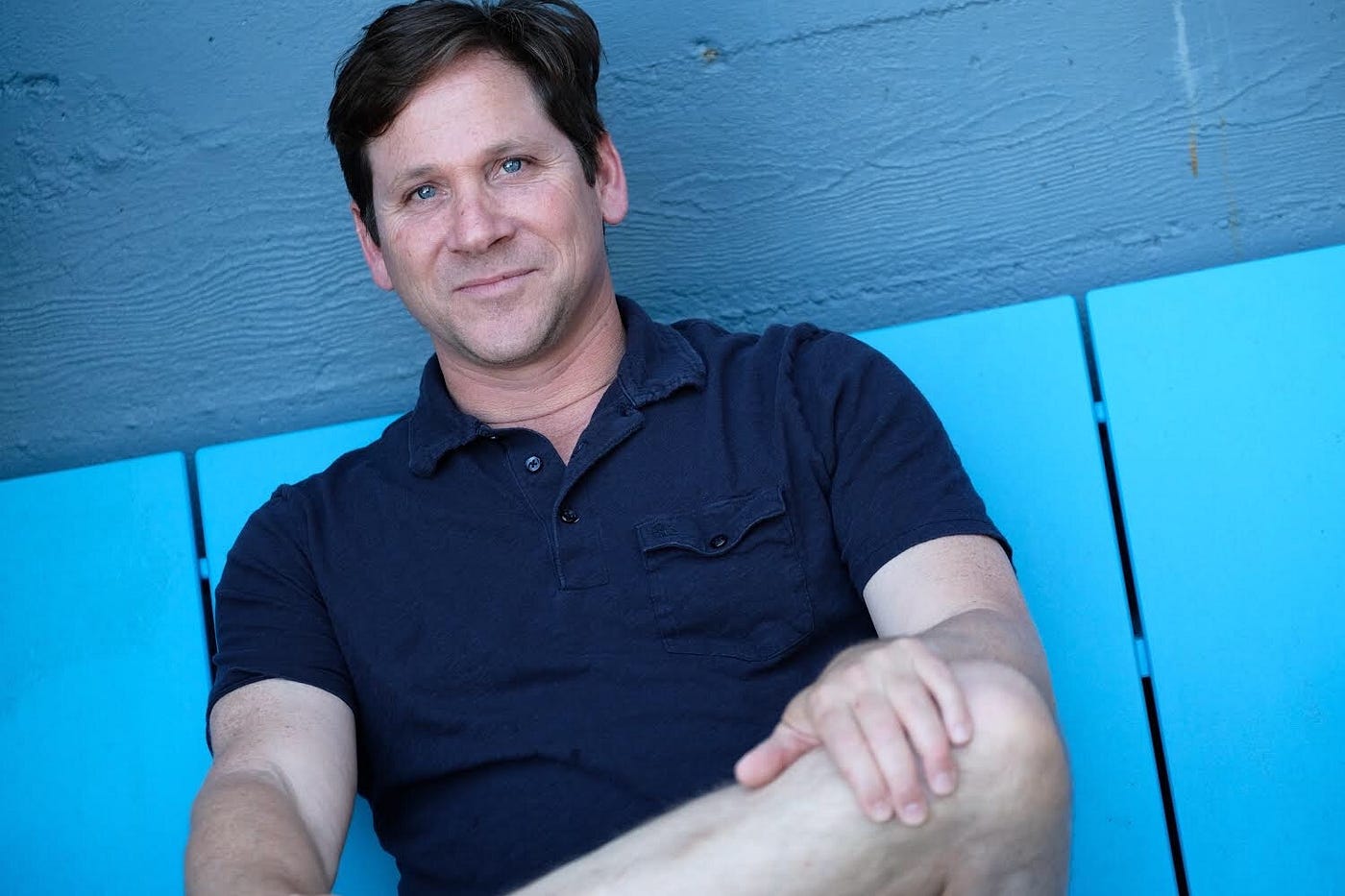
That all changed when I experienced Museum of the Hidden City. With plans for a four part series exploring the saga of affordable housing across different neighborhoods in the city, Chapter One focuses on the Fillmore neighborhood in the 1960s and 1970s. It’s the brainchild of Michael Epstein, a Reynold’s Journalism Institute fellow, a professor at the California College of Arts, and the founder of Walking Cinema. The experience brings participants into heart of the neighborhood itself. It’s a fusion of historical walking tour, podcast, and augmented reality experience that seeks to understand the present by exploring the decisions, legislation, and people that led to this particular moment in time.
The Fillmore is an apt neighborhood to start with. As part of the Western Addition, the neighborhood has existed since the mid 1800’s. The area was relatively spared by the destruction of the 1906 earthquake, and it quickly became a center of commerce and a cultural crossroads, particularly for Japanese and African American populations (though it was also home to thriving Filipino, Jewish, Russian, and Mexican immigrant communities). With the forced relocation and internment of Japanese Americans during World War II, vacancies were filled by a growing black population, moving west for the growing war-related defense industries. It was home to many thriving locally owned businesses, and it was arguably best known for its jazz music scene, earning it the nickname, “Harlem of the West.” Few of those businesses remain today, and the black population of the neighborhood is a fraction of what it once was. Museum of the Hidden City aims to explore the era of “urban renewal” that led to these changes as a means to understand the housing difficulties of the city at large.
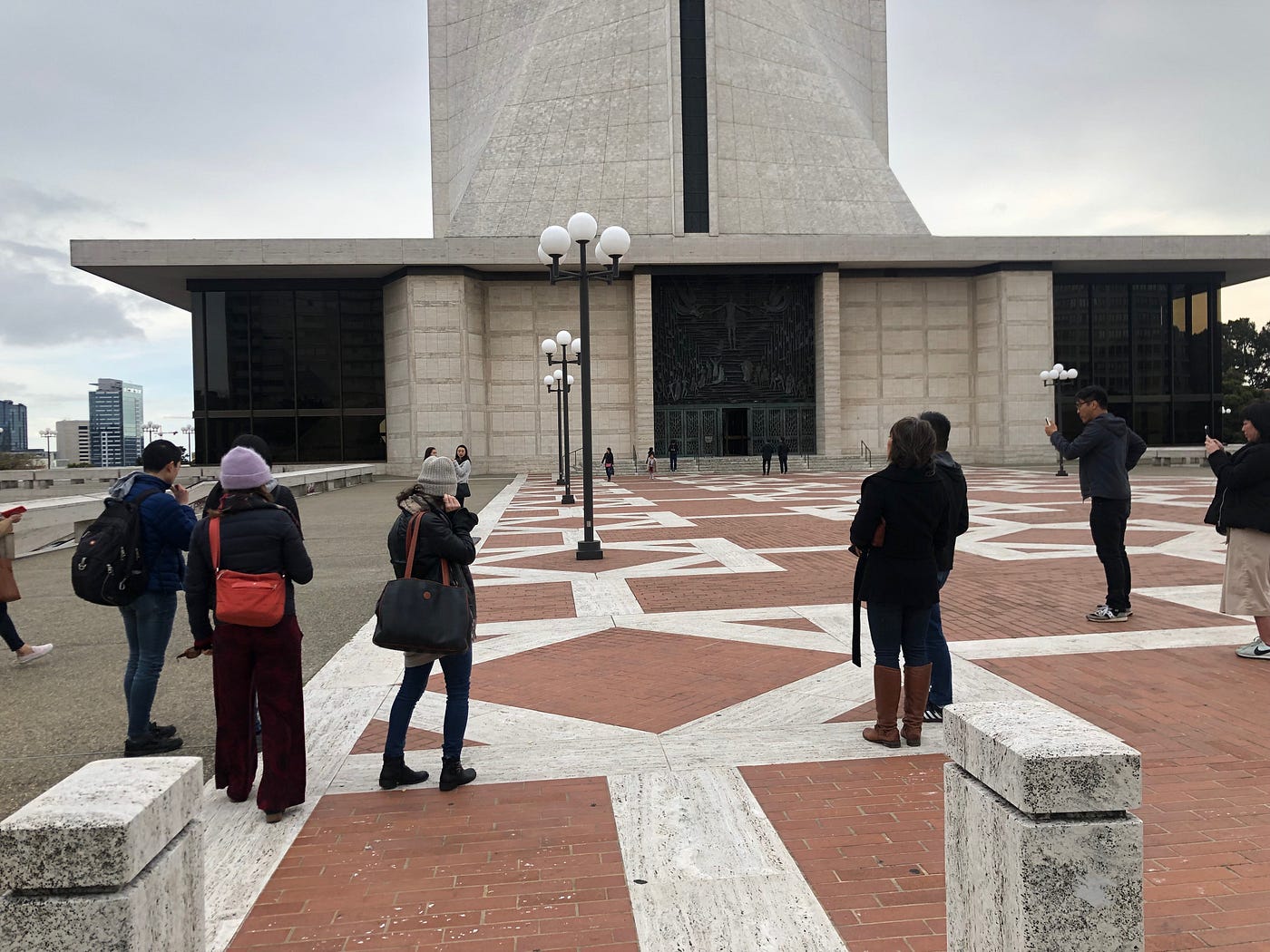
The experience is meticulously planned and masterfully laid out. Beginning at the Cathedral of Saint Mary, a striking modern-appearing church on the edge of the Fillmore district, visitors are introduced to the themes that will recur throughout the experience. We’re introduced to our narrators — two young San Francisco citizens based on real historical figures and portrayed convincingly and sympathetically by Samuel Getachew and Tianna Bratcher. The decision to start at Saint Mary’s is a smart one. By focusing on one structure, free from significant traffic or distraction, participants are able to become more comfortable with the experience’s patterns and flows. Entering a new communal space, even when it’s open to the public, is anxiety provoking, but the church (which I’d previously known only for the infamously scandalous shadow it inadvertently casts) is beautiful and inviting (during my visit, a child was practicing playing on the massive pipe organ, filling the space with music, although a quieter peaceful experience would likely be just as pleasant).
Get Brian Resler’s stories in your inbox
Join Medium for free to get updates from this writer.
SubscribeSubscribe
Eschewing the more traditional elements of an audio guide, the experience focuses on the relationship of the cathedral within the city and its place within its history. Through the eyes of the protagonist, the church, its sculptures, and its architecture take on a life of their own, and I felt sudden regret and embarrassment that I’d never given much thought to this structure that stands steps away from me and features so prominently in the skyline of the city I call home.
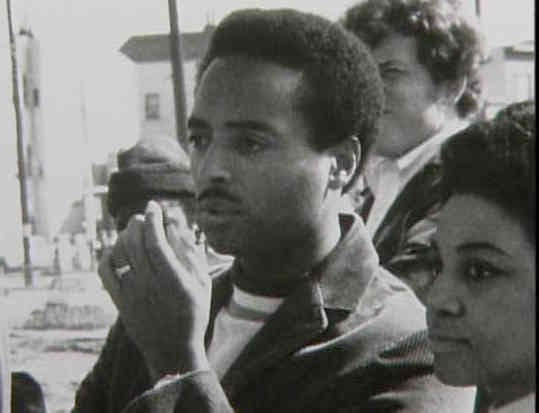
Eventually, the tour led me downstairs to the cathedral’s basement, where I met Maria, the friendly proprietor of the church’s gift shop who offered me three cards. These cards come to life in one’s hand with the use of the AR engine, and introduce us to three pivotal figures in the redevelopment of the Fillmore district, setting the stage for the sprawling story to come.
Stepping out of the church, the story of the Fillmore led me out to the street, where I encountered neighborhoods and housing developments. As the scope of the tour broadened, I was momentarily worried that a wrong turn would take me irretrievably off track, but the detailed directions and specific images were reassuring, and I felt comfortable following the directions into new-to-me areas of a neighborhood I’ve been exploring for almost a decade. Even more impressive, the directions would often become entwined in the story — speeding up and slowing down at the direction of my guides, even the rhythm of my stride revealed details of architecture that I’ve walked by hundreds of times and never noticed.
From monolithic high-rises to ground-level courtyards and playgrounds to aging Victorians, the experience weaves through the neighborhood, intermingling intimate personal stories with large urban planning decisions and the powerful men behind them. Meted out sparingly, the augmented reality offers a glimpse back at a city long gone but hiding just under the surface. Past and present collide, and one faces not only images of buildings long since bulldozed, but also the men and women who lived within the walls that still stand today — images of poverty and disrepair that were used not to elicit aid, but rather to evict and destroy, all in the name of “renewal.”
My path cuts through quiet narrow pathways, and though the tour never invades any private property or violates anyone’s privacy, there are times when it feels as if you’ve entered somewhere secret and intimate. Moments later, you find yourself in the middle of one of the city’s busiest intersections. Standing safely on a pedestrian bridge, the layout of the entire neighborhood surrounds you; through the lens of the app, you can see both past and present. And you can see Saint Mary’s off in the distance, and the cliched thought inevitably passes through your mind, “How far we’ve come.”
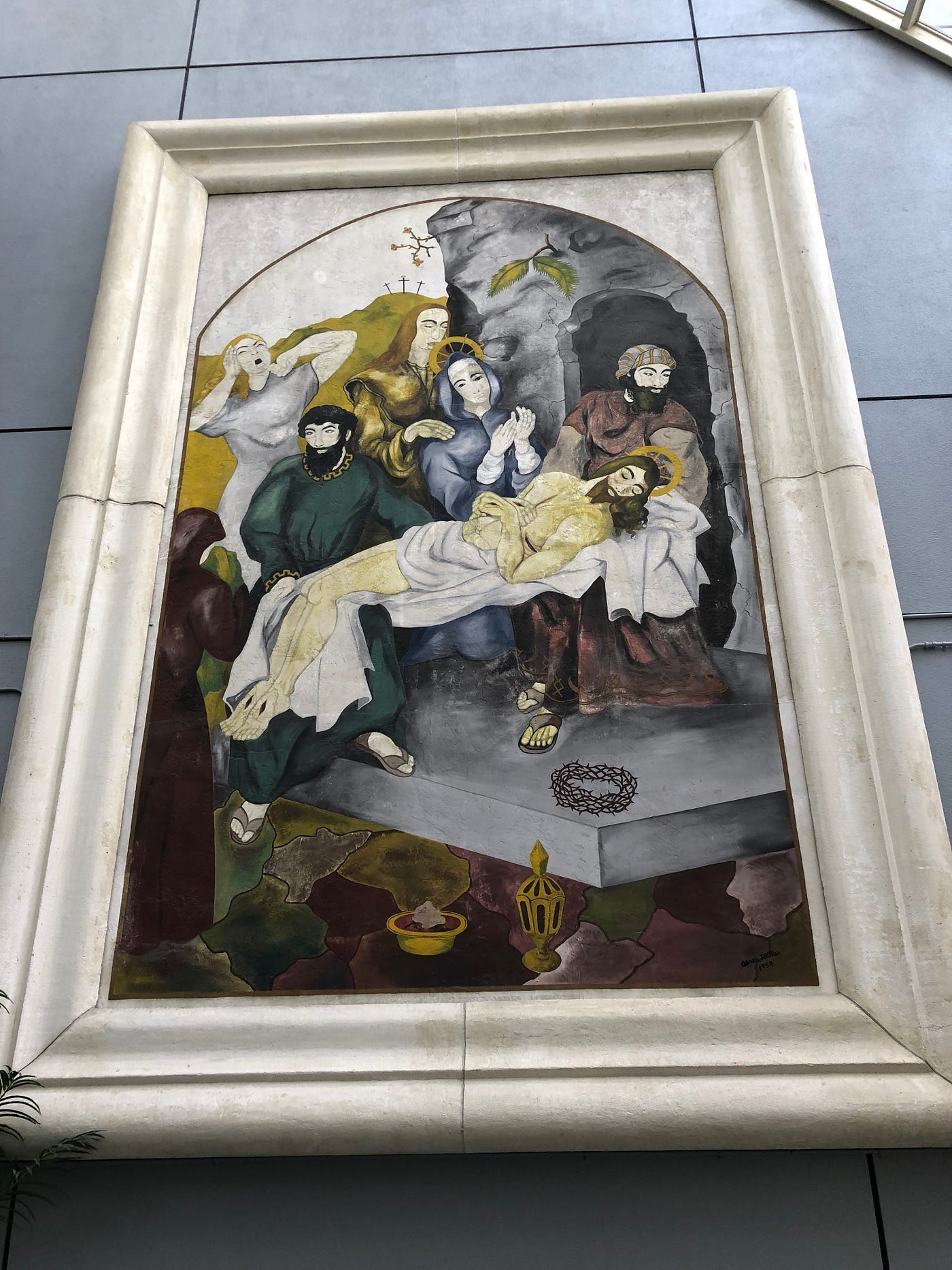
The experience culminates by bringing you face to face with two massive artifacts of a structure that once existed, not far from where you stand and one that takes you full circle to your start, only 90 minutes ago in the cavernous cathedral at the top of the hill. Intensely personal to one of the narrators, any hope of abstracting or dismissing what you’ve seen and heard is lost. Faced with videos of destruction overlying these artifacts, I found myself mourning for a place that ceased to exist long before I was born, all the while, in my ear, the question is asked “Should these have been saved at all, devoid of the place for which they were intended?” I’ve walked by these artifacts probably hundreds of times and never knew they were there.
And as I walked through the bustling neighborhood, shuttered legacy businesses side-by-side with thriving new restaurants and massive apartment complexes, the narrator points out that the names of residents, artists, and entrepreneurs of the old Fillmore are literally etched into the concrete below my feet — a makeshift Walk of Fame that seems constantly threatened by new construction or by the erosion of constant pedestrian traffic . The experience ends in a small park — a grassy spot with a waterfall. A calm oasis hidden just out of view. This wasn’t the original intention for this site, and the weight of that disappointment mixes with and complicates the sense of calm one experiences while lying in the grass, surrounded by the sound of children at play and the trickle of the fountain’s water.
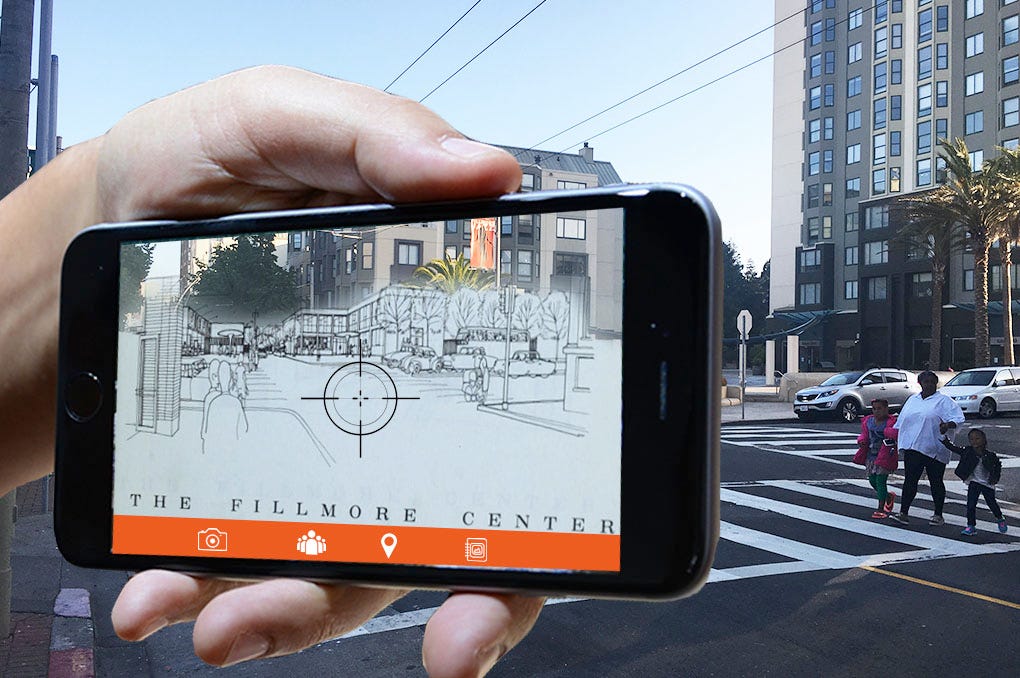
The experience of this first chapter of Museum of the Hidden City tells a small segment of the history of one community in a small slice of one neighborhood in a large city. And yet in many ways it changed the way I look at that city and the world. Like those names etched in the concrete sidewalk, the history of a place is easy to ignore but never completely out of view, constantly threatened to be lost. I’m excited to experience the next chapters of Museum of the Hidden City, but I’m even more excited to experience the city with a new appreciation, an appreciation for the names under my feet and the people who walked these streets before me.
With my reality newly augmented, the city is ever so slightly less hidden.
Museum of the Hidden City continues through January 1, 2020. The experience is free of charge (donation is suggested).
NoPro is a labor of love made possible by our generous Patreon backers. Join them today!
In addition to the No Proscenium web site, our podcast, and our newsletters, you can find NoPro on Twitter, Facebook, YouTube, Instagram, in the Facebook community Everything Immersive, and on our Slack forum.
Office facilities provided by Thymele Arts, in Los Angeles, CA.


















Discussion